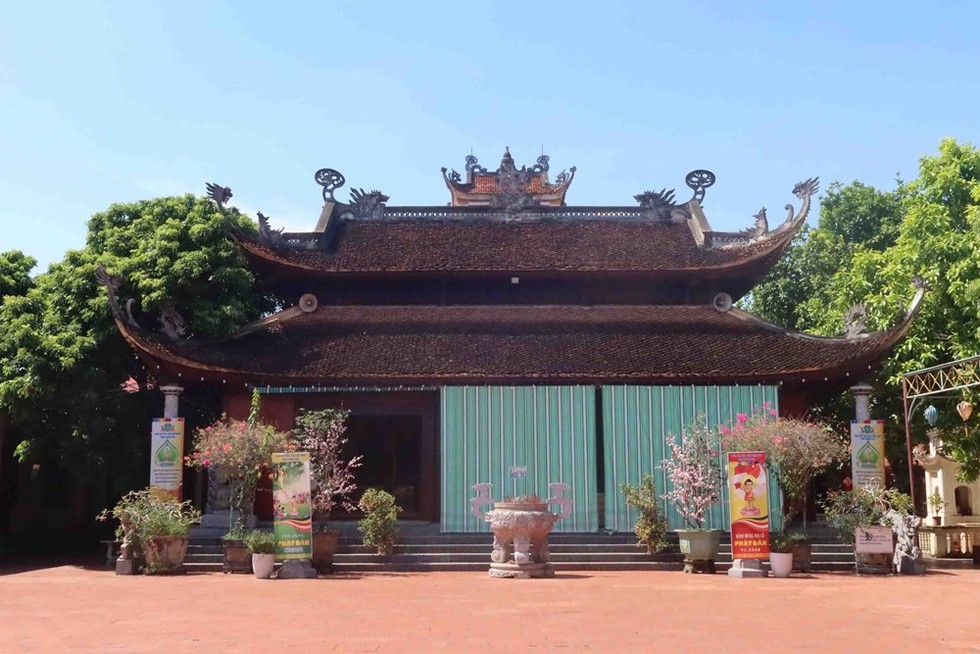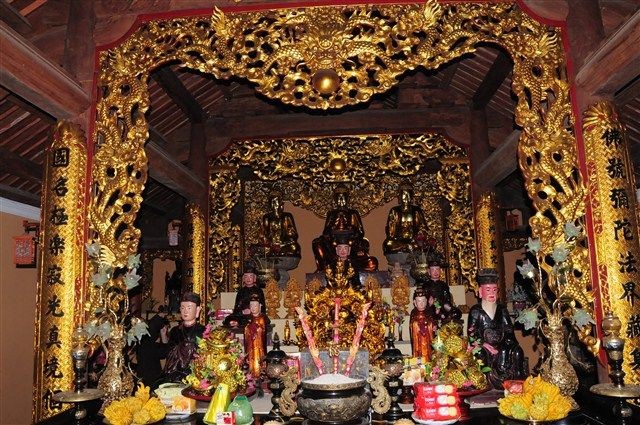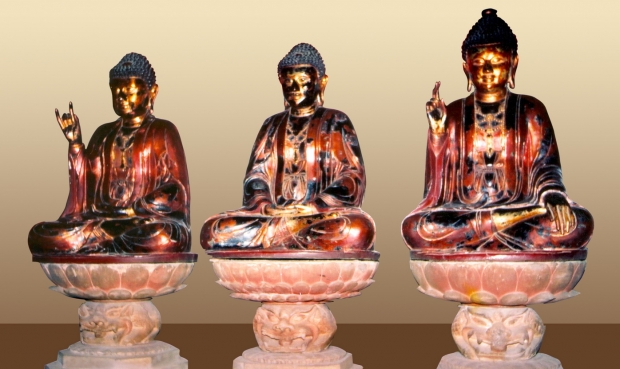Sung Nghiem Dien Thanh Pagoda
1. Overview
Sùng Nghiêm Diên Thánh Pagoda is one of the oldest Buddhist temples in Vietnam, located in Quang Duc commune, Quang Xuong district, Thanh Hoa province. With over 900 years of history, it stands as a remarkable symbol of early Vietnamese Buddhism and a priceless cultural and spiritual heritage of the region.
2. Historical and Cultural Significance
Built during the Ly Dynasty (specifically in the year 1121, under King Ly Nhan Tong), Sùng Nghiêm Diên Thánh Pagoda is known for its deep historical and religious importance. The temple served as a major center for Buddhist practice, education, and royal ceremonies in the region.
A key highlight of the pagoda’s history is the presence of the “Sùng Nghiêm Diên Thánh” stele, which is considered one of Vietnam’s national treasures. This ancient inscription carved in 1121 provides valuable information about the development of Buddhism, architecture, and royal patronage during the Ly Dynasty.
The name "Diên Thánh" (延圣) translates to "Extending the Sacred," reflecting the temple’s role in spreading the Buddhist faith and moral teachings.
3. Architecture and Design
Though the pagoda has undergone several restorations over the centuries, it still retains elements of traditional Vietnamese temple architecture, especially from the Ly and Tran periods. Key architectural features include:
-
Ancient Stele House: Housing the famed 900-year-old stone stele with intricate carvings and inscriptions in old Sino-Vietnamese script.
-
Main Hall (Chính Điện): Featuring statues of Sakyamuni Buddha and Bodhisattvas.
-
Lotus Pond and Courtyard: Offering a tranquil atmosphere for prayer and meditation.
-
Carved Pillars and Roof Decorations: Reflecting the artistry of Ly-era temple design.
The entire complex is harmoniously built within a natural rural landscape, surrounded by trees, rice fields, and peaceful village roads.
4. How to Get There
Sùng Nghiêm Diên Thánh Pagoda is located about 20 kilometers south of Thanh Hoa City. Visitors can reach it by car, motorbike, or local bus. The drive offers scenic views of the countryside and small villages of Quang Xuong district.
5. Festivals and Activities
As a historic Buddhist site, the pagoda hosts various spiritual and cultural events:
-
Lunar New Year and Vesak Celebrations: Attracting many devotees and visitors.
-
Historical Commemorations: Honoring the temple’s founding and its cultural heritage.
-
Educational Visits: By students, monks, and scholars studying ancient Vietnamese Buddhism.
In addition to ceremonies, the temple is a destination for those interested in history, archaeology, and epigraphy, especially because of its ancient stele.
6. Tips for Visitors
-
Be respectful of the historical artifacts—especially the stele, which is of national importance.
-
Take time to read the translations and explanations of the inscriptions (usually available in Vietnamese).
-
Wear appropriate clothing and maintain quiet behavior inside the temple grounds.
-
Consider visiting with a local guide to fully understand the historical background.
7. Conclusion
Sùng Nghiêm Diên Thánh Pagoda is a sacred relic of Vietnamese history and Buddhism. With its nearly millennium-old stele, serene surroundings, and enduring spiritual significance, it offers visitors a chance to connect with Vietnam’s deep religious roots and cultural legacy. Whether you are a pilgrim, history enthusiast, or cultural traveler, this ancient pagoda is a destination not to be missed in Thanh Hoa.




